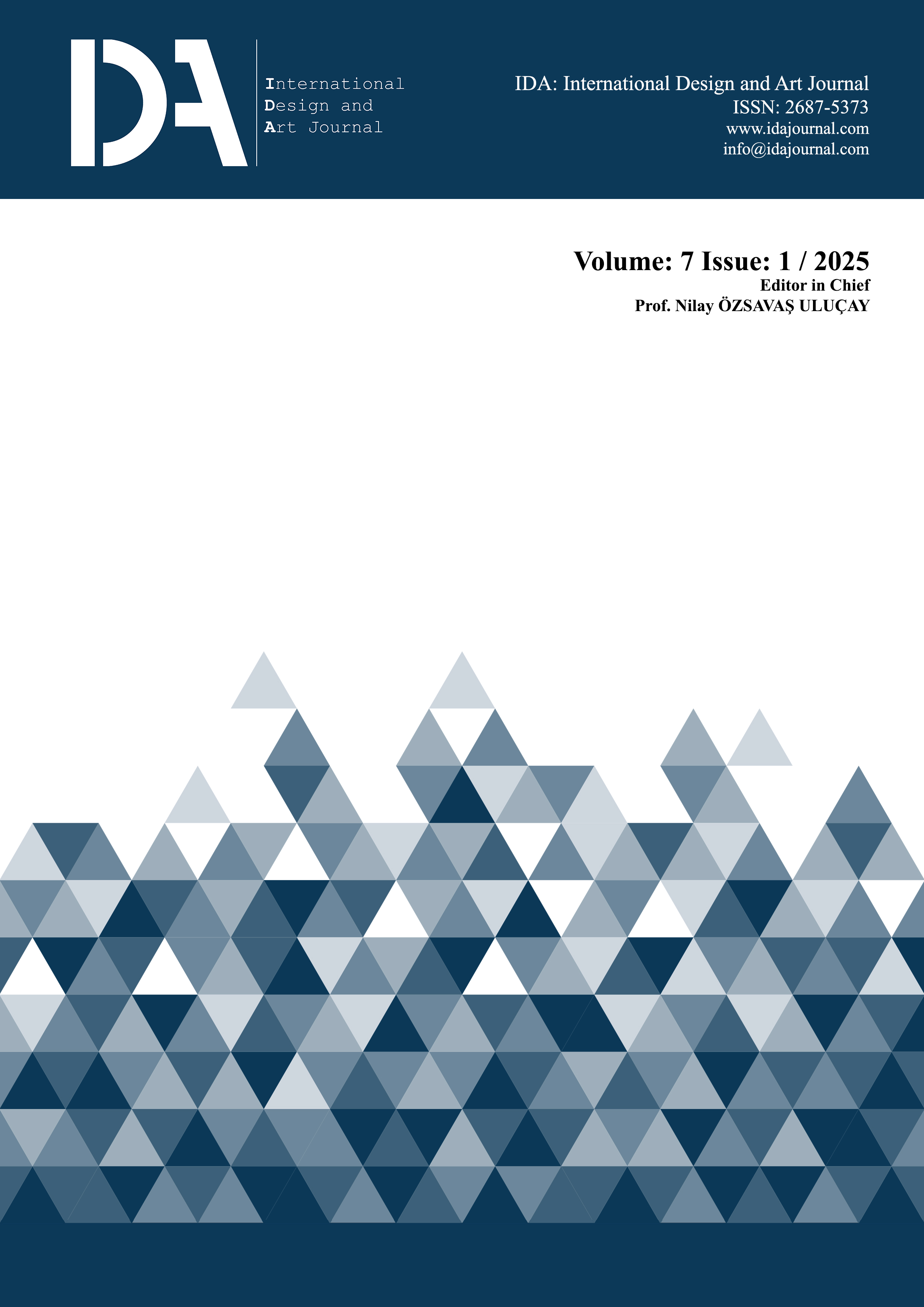Spirit of place and cinematic space: Jim Jarmusch’s Dead Man movie
Keywords:
Cinematic space, Dead Man, Genius loci, Social change, Spatial relationshipsAbstract
Within the scope of the research, the role of the fiction-character-space trilogy, which are inseparable parts of the cinematic universe, in storytelling was emphasized, and the focus was on the human-space relationship in the context of the spirit of the place. In this direction, it was aimed to examine how the cultural and socio-economic lives and internal conflicts of the characters in the film were processed through spaces. The film “Dead Man”, written and directed by Jim Jarmusch, who has a unique perspective on his life and approach to cinema, was chosen as the material. Based on visual data, a phenomenological approach based on interpretation in accordance with qualitative research technique was adopted. Christian Norberg-Schulz’s concept of Genius Loci has formed the theoretical basis for the analysis of spaces in the film. When the relationships between the places in the movie Dead Man and characters and story fiction are examined, the concepts of “death, inactivity, drift, acceptance, self-discovery, belonging, peace” are revealed. As a result, in this film, places are used as powerful transfer tools that strengthen the viewer’s perception and evoke memories. Drawing attention to changing human-human, human-nature, and human-space relations after the industrial revolution, the film is remarkable as an interdisciplinary tool in examining and evaluating spatial relations and cross-sections.
References
Adiloğlu, F. (2005). Sinemada mimari açılımlar: Halit Refiğ filmleri. Es Yayınları.
Ahmadi, A. & Ross, A. (2012). Jim Jarmusch’s Dead Man: The cinematic telling of a modern myth. Angelaki, 17(4), 179-192. https://doi.org/10.1080/0969725X.2012.747336
Bergson, H. (2002). Matter and memory (N. M. Paul, W. Scott Palmer, Çev.). Zone Books.
Benjamin, W. (2002). Pasajlar (A. Cemal, Çev.). YKY Yayınları.
Bordwell D. &Thompson K. (2012). Film sanatı (E. Yılmaz, E. S. Onat, Çev.). De Ki Yayınevi.
Bromley, R. (2001). Dead man tells tale: Tongues and guns in narratives of the west. European Journal of American Culture, 20(1), 50-64. https://doi.org/10.1386/ejac.20.1.50
Bunuel, L. (1998). Introduction, film architecture: Set designs from metropolis to runner. Dietrich Neumann, Prestel-Verlag.
Comolli J. L. (2003). Sinema. Ütopyalar sözlüğü içinde (T. Ilgaz, Çev.). Sel Yayıncılık.
Cresswell, T. (2004). Place: A short introduction. Blackwell Pub.
Deleuze, G. (2021). Sinema II: Zaman-İmge (B. Yalım, E. Koyuncu, Çev.). Norgunk Yayıncılık.
Demir, Y. (1994). Filmde zaman ve mekân üzerine. Kurgu, 5(1), 100-109.
Greenberg, C. (2011). Avangart ve kitsch (M. Yalçın, Çev.). Sanat ve Kuram, 577-587.
Güçlü, İ. (2019). Sosyal bilimlerde nitel araştırma yöntemleri. Nika Yayıncılık.
Güler, A., Halıcıoğlu, M. B., & Taşğın, S. (2015). Nitel araştırma yöntemleri. Seçkin Yayıncılık.
Heidegger, M. (2008). Düşüncenin çağrısı. Say Yayınları.
Hertzberg, L. (ED.). (2001). Jim Jarmusch: Interviews. University Press of Mississippi.
Kant, I. (1894). Dissertation on the form and prenciples of the sensible and the intelligible world, in Kant’s inaugural dissertation of 1770 (J. E. William, Trans.). Columbia College.
Kavafis, K. (2010). Kavafis’ten yüz şiir (C. Çapan, Çev.). Helikopter Yayınları.
Küçükparmak, A. (2019). Kant’ta zaman-mekânın a prioriliği problemi. Temaşa Erciyes Üniversitesi Felsefe Bölümü Dergisi, (11), 91-100.
Kıray, M. B. (2006). Toplumsal yapı ve toplumsal değişme. Bağlam Yayıncılık.
Lefebvre, H. (2014). Mekânın üretimi (I. Ergüden, Çev.). Sel Yayıncılık.
Norberg Schulz, C. (1979). Genius loci: Towards a phenomenology of architecture. Edinburgh College of Art Library.
Oktuğ, M. (2008). Sinemada anlatı: Senaryo. Galata Yayınları.
Pallasmaa, J. (2007). The Architecture of image: Existential space in cinema (2nd Ed.). Rakennustieto.
Serin, F. N. (2014). Kant felsefesinde çoklu ben’in birleştiricisi olarak zaman. FLSF Felsefe ve Sosyal Bilimler Dergisi, (17), 171-186.
Sofuoğlu, H. (2004). Bergson ve sinema. Selçuk İletişim, 3(3), 66-76. https://doi.org/10.18094/si.04280
Tuan, Yİ-FU. (1977). Space and place: The perspective of experience. University of Minnesota Press.
William, B. (2007). Seçme şiirler (T. Alkan, Çev.). Bordo-Siyah Yayıncılık.
Yıldırım, A., & Simsek, H. (2021). Sosyal bilimlerde nitel araştırma yöntemleri. Seçkin Yayıncılık.
Yilmaz, H. (2011). Henrı Bergson’un zaman kavramına yaklaşımının çağdaş anlatı sinemasına etkisi. Afyon Kocatepe Üniversitesi Sosyal Bilimler Dergisi, 13(2), 61-78.
Downloads
Published
Issue
Section
License
Copyright (c) 2025 IDA: International Design and Art Journal

This work is licensed under a Creative Commons Attribution-NonCommercial-ShareAlike 4.0 International License.
IDA: International Design and Art Journal is an open-access academic journal. All publishing rights of the accepted articles are deemed to assign to IDA: International Design and Art Journal. Articles can not be published and copied anywhere, and can not be used without reference.
IDA: International Design and Art Journal is licensed under a Creative Commons Attribution-NonCommercial-ShareAlike 4.0 International License.



